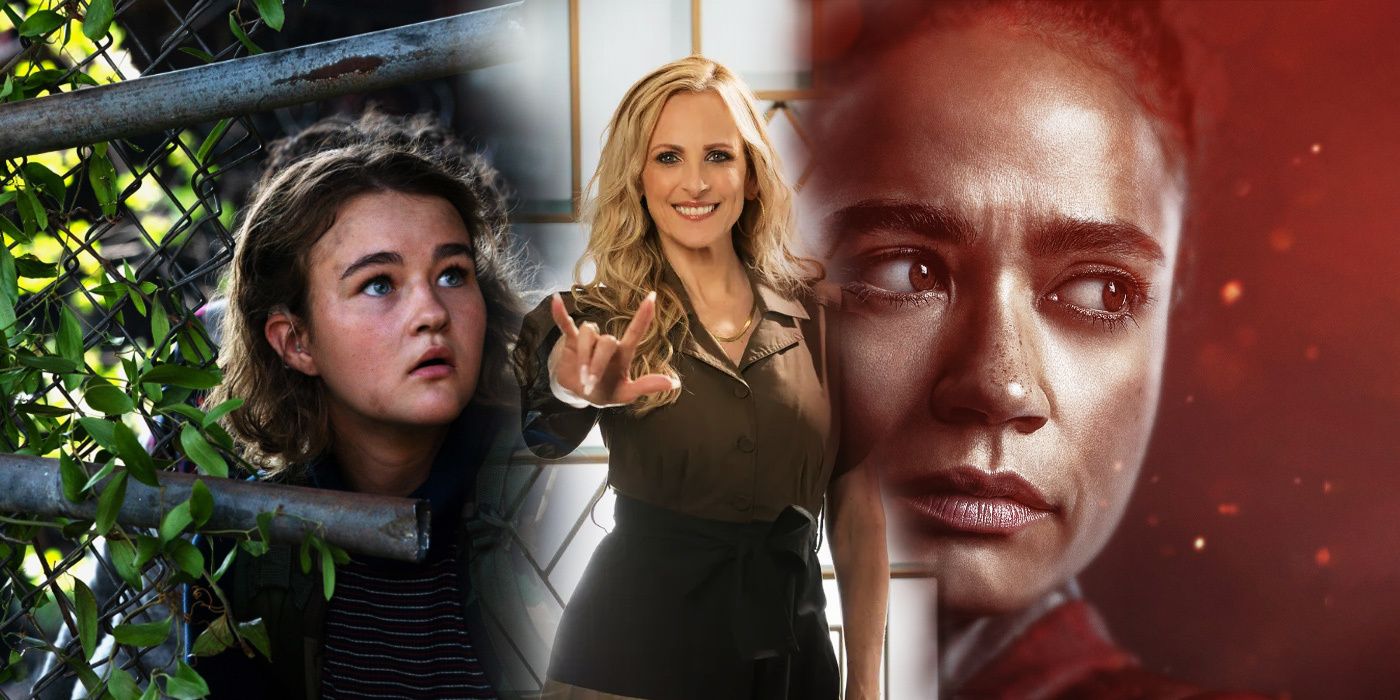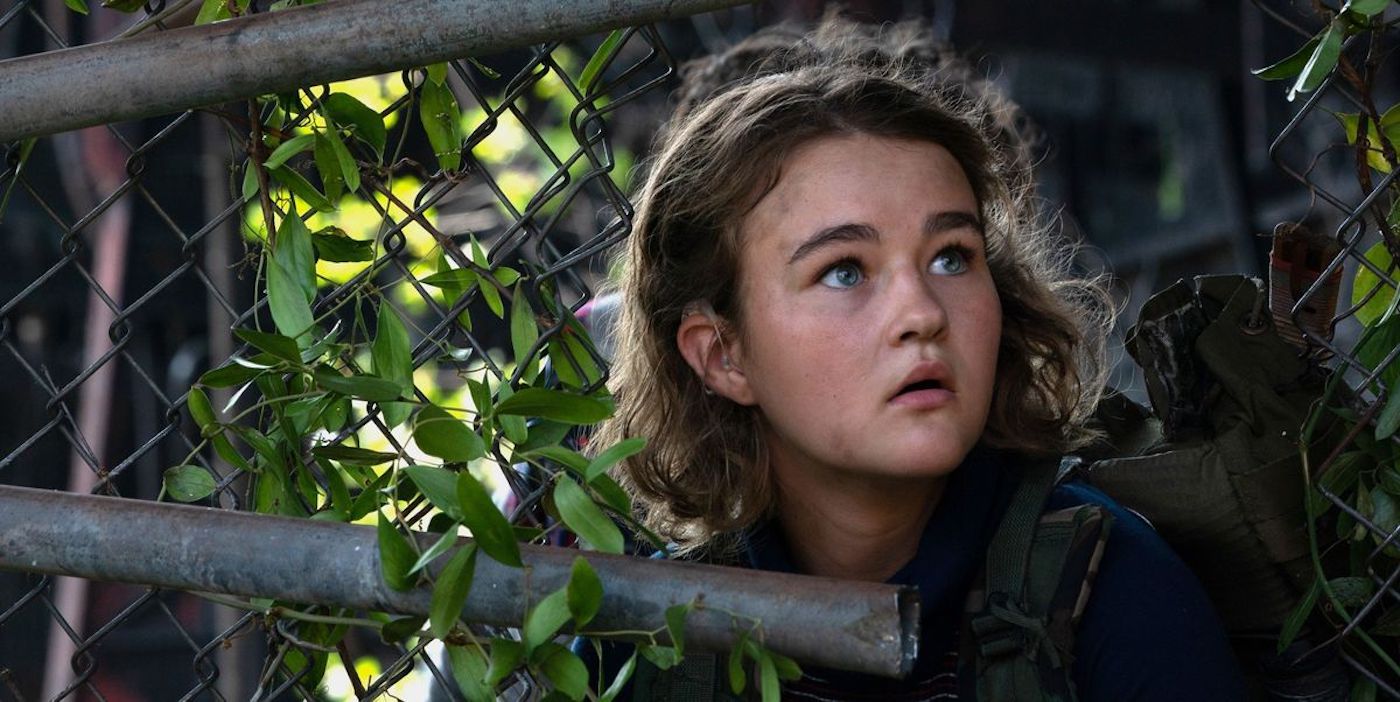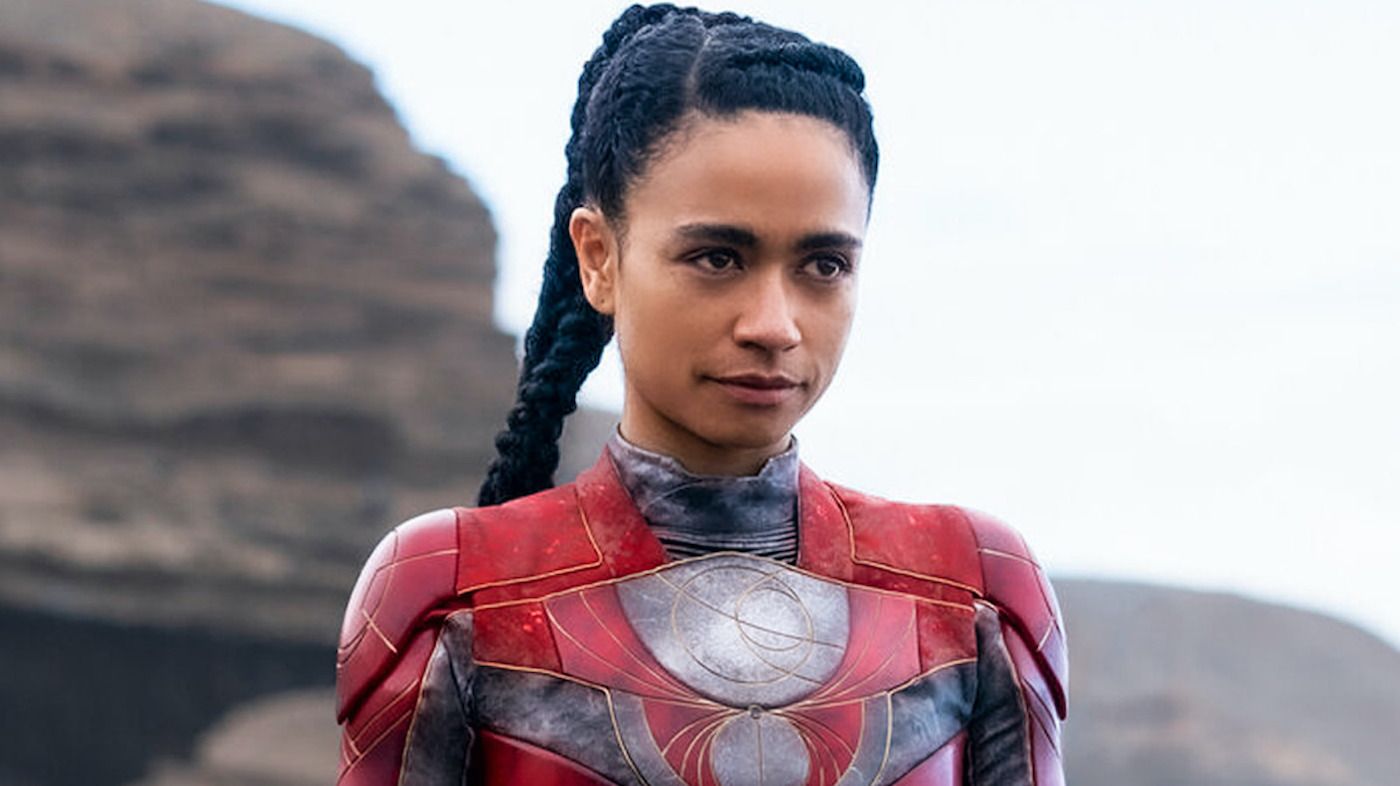While much of the discussion surrounding movies in 2021 seems to be dictated by the topic of the pandemic — such as whether or not movie theaters can bounce back, and whether or not the movie theater experience will be preserved alongside the continuing rise of streaming platforms — there is still a positive trend that this year’s movies demonstrate, specifically for deaf representation. While The Sound of Metal was widely released in theaters and on Amazon Prime Video at the end of 2020, much of its success and notoriety carried over into 2021 during the awards circuit, culminating in the film’s Oscar nominations, and Oscar wins in Best Editing and Best Sound. Following a rock drummer’s (Riz Ahmed) journey through hearing loss, The Sound of Metal showcases a supporting cast of deaf actors alongside Ahmed, Olivia Cooke, and Paul Raci.
Still, some viewers critiqued the film’s lack of deaf actors in lead roles. Even Paul Raci — who grew up as the child of deaf adults (CODA) — anticipated the criticism, telling IndieWire, “I hear people saying, why is this hearing guy playing a Deaf role? And my role, too! So Riz and I are gonna get some flak.” But the films of 2021 seem to have learned from this criticism, as more recent films have worked to include more deaf actors in lead roles. A Quiet Place Part II, CODA, and Marvel’s Eternals take a significant step towards deaf representation in movies.
An important issue that these films strive to address is the lack of representation from not only deaf characters on screen but also the opportunity for deaf actors to portray them. This was part of the controversy surrounding the Stephen King adaptation, The Stand, a 2020 Paramount+ series that cast hearing actor Henry Zaga as the deaf character, Nick Andros. Millicent Simmonds, who plays the deaf Regan (and who is deaf herself) in A Quiet Place Part II, said to Variety on the topic of hearing actors playing deaf characters: “I think it’s not realistic, and it’s not fair to the talent out there who aren’t chosen because of their disability.” The National Association of the Deaf agrees with Simmonds, “Too often, hearing people misappropriate our stories and our roles, only to seek out our assistance to help them create a facsimile of our lives. This is not authenticity.” Often, in discussions of diversity, inclusion, and representation, communities of disability and illness are left out of the conversation. But such communities, such as the deaf community, should have a place in entertainment media — they have just as many and diverse stories to tell.
Now more than ever, the call for authentic deaf representation in cinema has strengthened, and the films of 2021 showcase how deafness and Deaf culture are represented. A Quiet Place’s Simmonds lost her hearing before the age of one and grew up deaf alongside her hearing family who learned American Sign Language (ASL). Lauren Ridloff, who played a supporting role as a teacher in The Sound of Metal, was born without hearing and is now part of the all-star ensemble of Marvel’s Eternals as the speedster, Makkari. And while the protagonist of CODA is a hearing character — Ruby (Emilia Jones), the daughter of deaf parents — her deaf family members are played by deaf actors. Marleen Matlin, who won a Best Actress Academy Award in 1987 for her role in Children of a Lesser God and remains the youngest winner in that category and the only deaf actress to win an Academy Award, plays Ruby’s deaf mother. As Matlin tells USA Today, she fought a studio push for a known hearing actor to play her husband and Ruby’s father, “I can't see any actor putting on the costume of being deaf. We are not costumes to put on, not any longer.” Troy Kotsur, a deaf actor and member of the National Theater of the Deaf, ultimately got the part, and Daniel Durant, also a deaf actor, received the role of Ruby’s brother. With CODA’s ensemble of multiple deaf characters, the film is a significant step in representation.
With A Quiet Place Part II and Eternals especially, deaf characters are represented more positively than before, as Millicent Simmonds and Lauren Ridloff respectively play characters with disabilities that aren’t treated as disabilities at all. In the Quiet Place franchise, Regan and her family are adjusted to Deaf culture — that is, Regan’s parents (Emily Blunt and John Krasinksi) and brother (Noah Jupe) know how to sign and interact with Regan as part of their everyday, normal life. When the alien-monster apocalypse begins, that doesn’t change. In fact, their ability to sign and communicate silently becomes a great advantage compared to the other hearing characters in the film’s world who cannot communicate without their voice. And in Eternals, the other superpowered characters around Ridloff’s Makkari know how to sign, which leads to one of the cutest romances in the MCU between her and Barry Keoghan’s Druig. These films — like the characters around them — normalize deafness rather than portraying deafness as a disability that needs to be fixed.
Another step forward that these films take is the use and depiction of American Sign Language (ASL) by both deaf and non-deaf actors and the use of subtitles for audiences who are not fluent in it. At the 2020 Golden Globes Awards ceremony, director Bong Joon-ho accepted his award for Parasite for Best Foreign Film with a call to action for audiences, “Once you overcome the one-inch tall barrier of subtitles, you will be introduced to so many more amazing films.” In Eternals, not only are subtitles shown on screen when languages such as Spanish and even ancient Babylonian are spoken, but subtitles also help audiences understand characters when they sign with each other. The very first frame of Eternals also acclimates the audience to read as much as to watch the film — it opens with scrolling text, akin to Star Wars, that sets up the lore of the film. In the same way deaf representation in films should be normalized, the use of subtitles too — regardless of which language is being translated — can help expand the possibilities of film and storytelling.
While there might be disagreements over the accuracy of representation in these films and to what extent these actors and characters are represented. Actors and filmmakers behind the camera as well as members of the deaf community and other audiences view this shift as a positive. With A Quiet Place Part II, CODA, and Eternals, the movement towards deaf characters’ and actors’ prominence in mainstream films can already be seen right now. Overall, the fact that deaf actors are being cast in deaf roles (rather than non-deaf and non-hearing impaired folk) is seen as a positive aspect of the way the entertainment industry is changing. And audiences, too, are willing to accept these actors, characters, and representations, as there has been an increase in interest in learning ASL following the release of Eternals.



